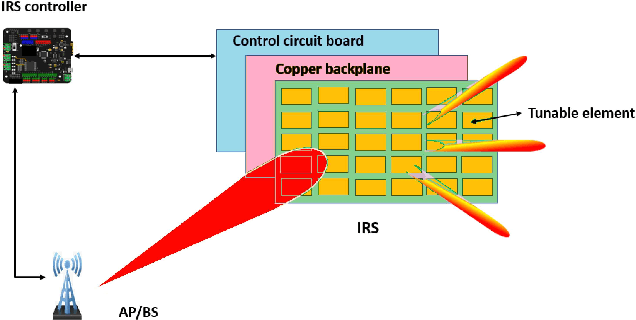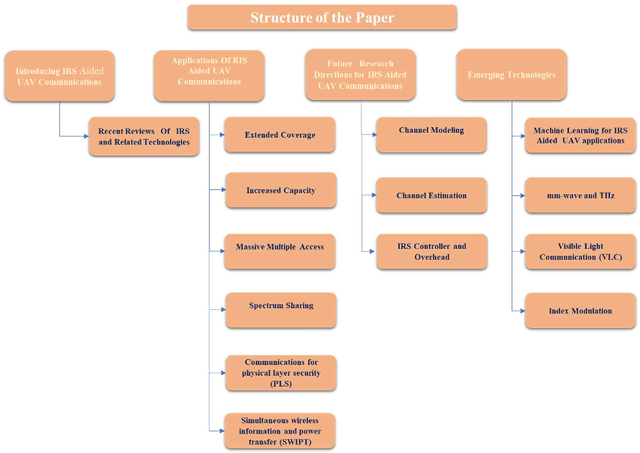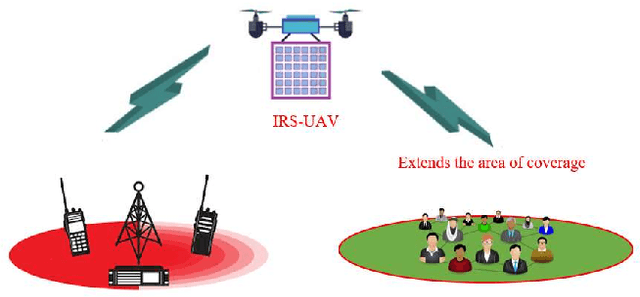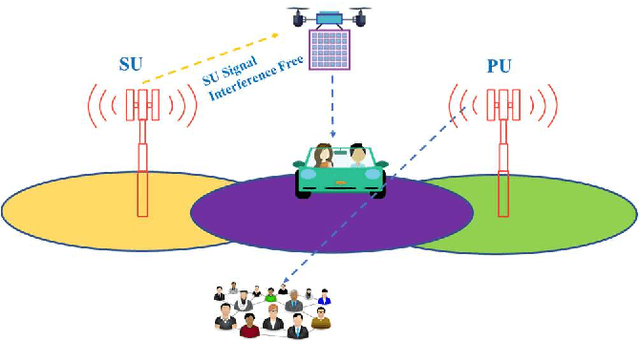Galymzhan Nauryzbayev
Outage Performance of Fluid Antenna System (FAS)-aided Terahertz Communication Networks
Jan 21, 2023Abstract:Millimeter-wave networks have already been successfully rolled out in many countries and now the research direction heads toward new technologies and standards to enable Tbps rates for future sixth-generation (6G) wireless communication systems. This work studies a point-to-point terahertz (THz) communication network exploiting the concept of a fluid antenna system (FAS) over correlated alpha-mu fading channels, nicely fitting the THz communication. Furthermore, the considered system is expanded to the selection-combining-FAS (SC-FAS) and maximum-gain-combining- FAS (MGC-FAS) diversity variates at the receiver side. The proposed FAS and its diversity configuration techniques are aimed to combat the high path loss, blockages, and molecular absorption effect related to the THz band. Our contribution includes comprehensive outage probability (OP) performance analysis for the THz band given the non-diversity and diversity FAS receivers. Moreover, the derived outage probability formulas are verified via Monte Carlo simulations. Numerical results have confirmed the superior performance of the MGC-FAS scheme in terms of OP. Finally, this work justifies that a higher number of antenna ports dramatically improves the system performance, even in the presence of correlation.
Towards Quantum Annealing for Multi-user NOMA-based Networks
Jan 10, 2023



Abstract:Quantum Annealing (QA) uses quantum fluctuations to search for a global minimum of an optimization-type problem faster than classical computers. To meet the demand for future internet traffic and mitigate the spectrum scarcity, this work presents the QA-aided maximum likelihood (ML) decoder for multi-user non-orthogonal multiple access (NOMA) networks as an alternative to the successive interference cancellation (SIC) method. The practical system parameters such as channel randomness and possible transmit power levels are taken into account for all individual signals of all involved users. The brute force (BF) and SIC signal detection methods are taken as benchmarks in the analysis. The QA-assisted ML decoder results in the same BER performance as the BF method outperforming the SIC technique, but the execution of QA takes more time than BF and SIC. The parallelization technique can be a potential aid to fasten the execution process. This will pave the way to fully realize the potential of QA decoders in NOMA systems.
On the Performance of Dual RIS-assisted V2I Communication under Nakagami-m Fading
Jan 10, 2023



Abstract:Vehicle-to-everything (V2X) connectivity in 5G-and-beyond communication networks supports the futuristic intelligent transportation system (ITS) by allowing vehicles to intelligently connect with everything. The advent of reconfigurable intelligent surfaces (RISs) has led to realizing the true potential of V2X communication. In this work, we propose a dual RIS-based vehicle-to-infrastructure (V2I) communication scheme. Following that, the performance of the proposed communication scheme is evaluated in terms of deriving the closed-form expressions for outage probability, spectral efficiency and energy efficiency. Finally, the analytical findings are corroborated with simulations which illustrate the superiority of the RIS-assisted vehicular networks.
IRS-aided UAV for Future Wireless Communications: A Survey and Research Opportunities
Dec 12, 2022



Abstract:Both unmanned aerial vehicles (UAVs) and intelligent reflecting surfaces (IRS) are gaining traction as transformative technologies for upcoming wireless networks. The IRS-aided UAV communication, which introduces IRSs into UAV communications, has emerged in an effort to improve the system performance while also overcoming UAV communication constraints and issues. The purpose of this paper is to provide a comprehensive overview of IRSassisted UAV communications. First, we provide five examples of how IRSs and UAVs can be combined to achieve unrivaled potential in difficult situations. The technological features of the most recent relevant researches on IRS-aided UAV communications from the perspective of the main performance criteria, i.e., energy efficiency, security, spectral efficiency, etc. Additionally, previous research studies on technology adoption as machine learning algorithms. Lastly, some promising research directions and open challenges for IRS-aided UAV communication are presented.
IRS-Assisted Millimeter-wave Massive MIMO with Transmit Antenna Selection for IoT Networks
Dec 12, 2022Abstract:An intelligent reflecting surface (IRS)-assisted millimeter-wave (mmWave) massive multiple input multiple output (MIMO) system with transmit antenna selection (TAS) using orthogonal space-time block codes (OSTBC) scheme is proposed in this paper. This system combines TAS and IRS with hybrid analog-digital beamforming (HBF) for 60 GHz mmWave communications in order to exploit the benefits of TAS, OSTBC, analog beamforming (ABF), and transmit digital precoding techniques. The proposed system, however, benefits from the transmit diversity gain of OSTBC scheme as well as from the signal-to-noise ratio (SNR) gains of both the beamformer and the IRS technology. The simulation results demonstrate that TAS-OSTBC system with zero-forcing precoding technique outperforms the conventional TAS system with OSTBC scheme. Furthermore, the bit error rate (BER) performance significantly im-proves as the number of antenna array elements increases due to providing a beamforming gain. In addition, increasing the number of reflecting elements further enhances the error performance. It is also found from the simulation results that the TAS-OSTBC system with hybrid precoding has better BER performance than that of TAS-OSTBC with ABF, and IRS-assisted systems significantly outperform the conventional systems without the IRS technology. This makes the proposed IRS-assisted system an appealing solution for internet-of-things (IoT) networks.
 Add to Chrome
Add to Chrome Add to Firefox
Add to Firefox Add to Edge
Add to Edge